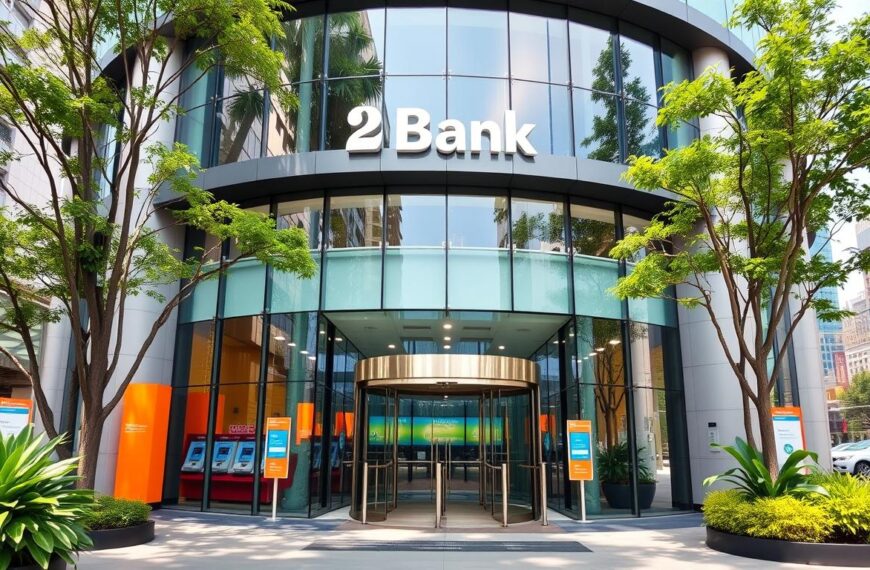Infrastructure investments are becoming more popular as an alternative asset class. They offer stable cash flows over the long term and protect against inflation. This makes them very appealing to big investors looking to diversify and get better returns1.
Infrastructure includes things like transport and power networks. These are crucial for communities, showing their value and stability as investments.
The move from public to private investment in infrastructure has opened new doors for investors1. With governments stepping back, the private sector is taking over. They bring new financing models and skills to deliver important services and facilities.
This change in infrastructure investment has brought new chances for investors1. It’s especially good for those wanting to spread out their investments. Infrastructure’s long-term deals, control over prices, and good risk-return balance make it very appealing to big investors and alternative asset managers.
Understanding Infrastructure as an Investment Class
Infrastructure is key to our daily lives, providing essential services and facilities. It includes things like transport, communication networks, and power. In recent times, private companies are now working alongside governments to fund these projects.
Definition and Core Characteristics
Infrastructure assets are the basic structures needed for a community to function well. They are costly to build and last a long time. Examples include roads, bridges, and utilities, all crucial for our well-being.
Traditional vs Modern Infrastructure Investment Models
Before, governments mainly funded infrastructure projects. But now, the private sector is playing a bigger role. This change has brought new ways of working together, like public-private partnerships.
Essential Community Services and Facilities
Infrastructure covers many important areas, like transport and utilities. It also includes social services like healthcare and education. These assets are vital for our economic and social health.
| Infrastructure Subsector | Examples |
|---|---|
| Transportation | Roads, bridges, airports, railways |
| Utilities | Water, electricity, gas |
| Telecommunications | Telecommunication towers, fibre-optic networks |
| Social Infrastructure | Hospitals, schools, affordable housing |
The Evolution of Infrastructure Investment in the UK
The UK has seen a big change in how it invests in infrastructure. Now, the private sector plays a bigger role than before2. This change is due to the privatisation of state-owned companies and the use of user-pays ideas. These changes have brought new chances for private investors in both new and old infrastructure2.
Public spending on infrastructure has dropped a lot. It went from 12% of government spending in 1970 to about 3% in 20002. This shows the government’s role has changed. It now focuses more on regulation than on building infrastructure itself2.
This shift has made room for private investors. They bring new ideas and ways to work more efficiently. This helps in delivering important services and facilities to the community2.
The private sector’s role in UK infrastructure has grown thanks to public-private partnerships (PPPs)2. These partnerships help the government use private money and skills. They are key in building and keeping up different types of infrastructure, like roads and energy systems2.
But, there have been challenges. Policymakers and regulators have had to find the right balance. They need to protect the public while also making it attractive for private investment2. Despite these challenges, the UK’s infrastructure is changing. The private sector is becoming more important in shaping the future of essential services and facilities2.
The move towards more private sector involvement in UK infrastructure has been slow. The government’s role has changed from being the main builder to a more regulatory one2. This change is due to privatisation and the use of user-pays ideas. These changes have opened up new opportunities for private investors in both new and old infrastructure2.
The private sector’s role in UK infrastructure has grown thanks to public-private partnerships (PPPs)2. These partnerships help the government use private money and skills. They are key in building and keeping up different types of infrastructure, like roads and energy systems2.
The evolution of infrastructure investment in the UK has not been without its challenges, as policymakers and regulators have had to navigate the balance between protecting the public interest and creating an attractive environment for private investment2. Nonetheless, the country’s infrastructure landscape continues to evolve, with the private sector playing an increasingly prominent role in shaping the future of the UK’s essential community services and facilities2.
Types of Infrastructure Assets and Their Investment Potential
Infrastructure investments cover a wide range of assets. Each has its own investment traits and potential gains. They can be split into three main groups: regulated assets, patronage risk assets, and social infrastructure projects3.
Regulated Infrastructure Assets
Regulated assets, like electricity networks, offer steady cash flows. They are watched over by the government, ensuring income is consistent3. Investors get long-term deals and can set prices, with earnings tied to inflation4.
Patronage Risk Assets
Assets like airports and toll roads earn based on how much they’re used. Their success depends on the economy and people’s needs3. These assets might bring bigger gains but also come with more ups and downs4.
Social Infrastructure Projects
Social projects, like hospitals and schools, offer steady income over time. They often have deals with the government3. They also protect against inflation, making them attractive for those wanting safe investments4.
Each asset type has its own risk and reward, fitting different investor needs3. Knowing the differences is key to a well-rounded portfolio4.
Is Infrastructure an Alternative Investment
Infrastructure is indeed seen as an alternative investment, not part of stocks and bonds5. In 2022, alternative investments, including infrastructure, made up 21% of global assets, worth $20 trillion. This number is expected to reach $29 trillion by 20275. Infrastructure assets are set to grow at 11% annually from 2022 to 2027, making up 7% of the global alternatives market5.
Infrastructure investments stand out for their unique qualities. They offer stable cash flows over the long term, protect against inflation, and don’t move in sync with other investments5. They also give a dividend yield twice that of global equities5. Historically, they’ve done better than global equities when inflation rises and interest rates fall5.
Infrastructure assets also have a lower downside capture ratio than global equities. This shows they can act as a shield in down markets5. Over the last 20 years, they’ve had a higher Sharpe ratio. This makes them a great choice for diversifying a portfolio and finding new ways to earn returns5.
| Metric | Infrastructure | Global Equities |
|---|---|---|
| Dividend Yield | Twice global equities | – |
| Performance in Years with 3% or More US Inflation | 12.4% appreciation | 7.5% appreciation |
| Performance in Years with Declining US Rates | 8.6% return | 7.7% return |
| Downside Capture Ratio | Under 90% | – |
| Sharpe Ratio (Past 20 Years) | Higher than equities | – |

Infrastructure investments also have special features. In India, they’re classified as Category I Alternative Investment Funds (AIFs) along with venture capital and private equity funds6. This shows infrastructure is widely recognized as an alternative investment class6.
The unique qualities and performance of infrastructure investments make them a strong choice. They offer diversification and access to non-traditional returns56.
Key Investment Characteristics of Infrastructure Assets
Infrastructure assets often have long-term concession agreements, up to 100 years7. They have a lot of pricing power, but this is checked by rules7. These investments are known for low risks, predictable growth, and the chance to increase in value8.
Long-term Concession Agreements
Many infrastructure assets have long-term contracts, sometimes for a century7. These deals offer a steady income, making sure investors get regular payments for a long time.
Pricing Power and Regulatory Framework
Infrastructure assets often have a big say in prices because they have a monopoly7. But, rules make sure prices are fair and services are affordable7. This mix of power and rules makes infrastructure investments appealing.
Risk-Return Profile
Investments in infrastructure are known for being low-risk, with predictable growth and the chance to grow in value8. Infrastructure debt is safer and more likely to recover than other bonds because of steady income and less sensitivity to market changes8. Also, these assets often keep pace with inflation, thanks to rules and contracts8.
Good financial management, like refinancing, can really boost the value of these investments8. The risk and return of infrastructure vary by project. Projects like toll roads or airports are riskier but could offer bigger rewards8.
“Infrastructure investments typically offer a socioeconomic rate of return of around 20%.”9
| Characteristic | Details |
|---|---|
| Concession Agreements | Long-term contracts, some up to 100 years |
| Pricing Power | Monopolistic market position, balanced by regulation |
| Risk-Return Profile | Low operating risks, predictable life cycles, potential for capital appreciation |
Infrastructure’s Role in Portfolio Diversification
Investing in infrastructure can greatly help diversify a portfolio. It offers low volatility and inflation protection. These traits make it a great choice for long-term investments10.
Private infrastructure has outperformed public infrastructure, showing better returns from 2007 to 202310. Investors with long-term plans often put 5-10% of their assets into infrastructure. They see its value in diversifying their portfolios10.
More investors, 57%, plan to increase their investment in infrastructure10. This demand shows infrastructure’s role in stabilizing portfolios during market ups and downs. In 2023, it performed well, especially the lower-risk assets10.
Low-risk infrastructure assets can lower a portfolio’s overall risk10. Core infrastructure assets have done well during inflation, offering inflation protection that investors value10.
As infrastructure evolves, investors look for different risk/return profiles. They want diverse ways to invest in this market10. The growing demand and changing global economy make infrastructure more appealing for diversification10.
While listed infrastructure is a growing asset class, it only makes up 2% of global equity allocations11. However, it offers lower volatility and less correlation with other assets. This makes it a good diversifier11.
Active management in listed infrastructure can improve its risk/reward balance. It gives investors more chances to benefit from its diversification11.
“Infrastructure investments can enhance a portfolio’s resilience by offering a combination of low to moderate risk levels and moderate to high inflation-protected returns, particularly valuable in volatile market conditions.”
Benefits and Challenges for Institutional Investors
Institutional investors, like pension funds and insurance companies, are now looking at infrastructure as an alternative. This asset class provides stable cash flows and protects against inflation12. These are key for their long-term needs. Yet, the infrastructure sector also has its own set of challenges for these investors to think about.
Stable Cash Flows and Inflation Protection
One big plus for institutional investors in infrastructure is the stable cash flows it offers. Projects like toll roads and renewable energy plants have steady income. This can help balance out the ups and downs of other investments, making infrastructure a smart choice for diversification.
Investment Barriers and Risk Considerations
However, there are also hurdles for institutional investors in infrastructure. High costs, potential lack of liquidity, and complex rules can make it hard to get started12. They also need to understand the risks, like delays and regulatory changes. Overcoming these needs deep knowledge and skill in the infrastructure field.
Infrastructure investments can bring stable cash flows and protect against inflation. But, there are also challenges to face. To succeed, investors must weigh the benefits against the risks of infrastructure projects.
“Infrastructure investments offer institutional investors the potential for stable cash flows and inflation protection, but the sector also presents distinct challenges that must be carefully navigated.”
Conclusion
Investments in infrastructure are becoming more popular in the13 world of alternative assets. Private investors have shown interest in infrastructure funds for only four to five years on average. This has made infrastructure more appealing to big investors, who have been getting more interested since the mid-2000s in Europe, Asia, and the US13.
The financial world sees infrastructure as a good alternative to stocks and bonds. This is especially true after financial crises, when investors look for new ways to manage their money13.
The private infrastructure market has grown a lot in the last ten years. Over $550 billion has been raised by unlisted infrastructure funds14. This growth shows the benefits of investing in infrastructure, like stable returns and protection against inflation13.
Infrastructure is also good for diversifying a portfolio. It has high barriers to entry and stable demand, making it attractive to investors13.
As returns from traditional investments become harder to find, infrastructure is becoming more important. It’s expected that more individual investors will put money into alternatives, growing 12% each year for the next decade15. But, investors need to understand the risks and complexities of infrastructure to make the most of it15.
They should also be aware of the high correlation between stocks and bonds, which could affect their investments15.
FAQ
What is infrastructure and how does it differ from traditional investment assets?
Infrastructure includes key facilities and systems for community growth. This includes transport, power, and telecommunication services. Unlike stocks and bonds, infrastructure is a long-term, capital-intensive investment with physical assets.
How has the landscape of infrastructure investment evolved over time?
The shift from public to private investment in infrastructure is significant. The government now acts as a regulator, not just a provider. This change has led to the privatisation of state-owned enterprises and new investment opportunities.
What are the different types of infrastructure assets and their investment characteristics?
Infrastructure assets are divided into regulated, patronage risk, and social categories. Each type has its own investment traits, risk levels, and potential returns. This variety caters to different investor preferences.
Why is infrastructure considered an alternative investment?
Infrastructure is seen as an alternative because it offers unique features. It provides stable cash flows, protects against inflation, and has low correlation with other assets. These qualities make it appealing for diversifying portfolios.
What are the key investment characteristics of infrastructure assets?
Infrastructure assets are known for their long-term agreements and pricing power. They have a favourable risk-return profile, with low operating risks and predictable lifespans. Active management can significantly enhance their value.
How do infrastructure investments contribute to portfolio diversification?
Infrastructure investments diversify portfolios by offering low correlation with traditional assets. They provide stable, inflation-protected returns, making them suitable for long-term investors. This combination of low to moderate risk and moderate to high returns enhances portfolio resilience.
What are the benefits and challenges for institutional investors in the infrastructure sector?
Institutional investors benefit from infrastructure’s stable cash flows and inflation protection. However, they face challenges like high capital needs, potential illiquidity, and complex regulations. Despite these, infrastructure offers attractive returns, making it a valuable addition to portfolios.

















